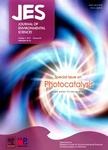Inorganic arsenic: A non-genotoxic carcinogen
Inorganic arsenic: A non-genotoxic carcinogen作者机构:Department of Pathology and Microbiology University of Nebraska Medical Center Omaha NE 68198-3135 USA.
出 版 物:《Journal of Environmental Sciences》 (环境科学学报(英文版))
年 卷 期:2016年第28卷第11期
页 面:28-37页
核心收录:
学科分类:0830[工学-环境科学与工程(可授工学、理学、农学学位)] 1002[医学-临床医学] 100214[医学-肿瘤学] 10[医学]
基 金:ILSI North America Technical Committee on Food and Chemical Safety Electric Power Research Institute (EPRI) Arsenic Science Task Force (ASTF) U.S. EPA Alberta Health Alberta Innovates Canada Research Chairs Program Canadian Institute of Health Research Natural Sciences and Engineering Research Council of Canada
主 题:Arsenic Cancer Genotoxicity Cytotoxicity Regeneration Cell proliferation
摘 要:Inorganic arsenic induces a variety of toxicities including cancer. The mode of action for cancer and non-cancer effects involves the metabolic generation of trivalent arsenicals and their reaction with sulfhydryl groups within critical proteins in various cell types which leads to the biological response. In epithelial cells, the response is cell death with consequent regenerative proliferation. If this continues for a long period of time, it can result in an increased risk of cancer. Arsenicals do not react with DNA. There is evidence for indirect genotoxicity in various in vitro and in vivo systems, but these involve exposures at cytotoxic concentrations and are not the basis for cancer development. The resulting markers of genotoxicity could readily be due to the cytotoxicity rather than an effect on the DNA itself. Evidence for genotoxicity in humans has involved detection of chromosomal aberrations, sister chromatid exchanges in lymphocytes and micronucleus formation in lymphocytes, buccal mucosal cells, and exfoliated urothelial cells in the urine. Numerous difficulties have been identified in the interpretation of such results, including inadequate assessment of exposure to arsenic, measurement of micronuclei, and potential confounding factors such as tobacco exposure, folate deficiency, and others. Overall, the data strongly supports a non-linear dose response for the effects of inorganic arsenic. In various in vitro and in vivo models and in human epidemiology studies there appears to be a threshold for biological responses, including cancer.



